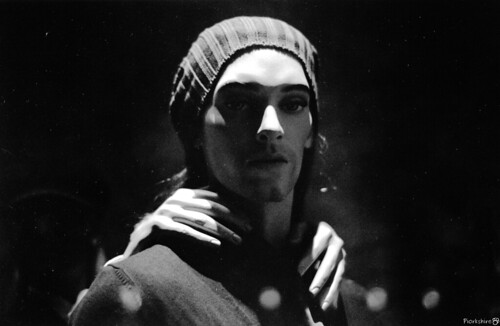To digitize slides by yourself or have a company scan them for you is the question. The answer is really simple. If you digitize slides yourself, you'll have to go out and buy a special scanner, learn how to hook it up to your computer as well as installing a driver so that it will communicate with the scanner, and then take hours scanning slides in - not to mention after you are done scanning your slides, you will then have to buy a $600 photo editor (preferably Photoshop) to alter the color and sharpen the image. That's just to much work for one person to do, not to mention the cost of everything. My personal view is that if I still had my slides hanging around the house, I would take them to a business that can digitize slides to DVD for a reasonable price.
So where should you take your slides? Good question. Wal-Mart can digitize slides, but that isn't their specialty. I don't want to blow a whole bunch of money of where it probably won't be done right in the first place. So the answer is - anyone can do it - but that raises another question - who can do it the right way? You'll have to really search on the internet to find an answer.
Just bring up Google on the internet. Type in "scanning service reviews". This will show you reviews written by people that had good or bad experiences with scanning companies. This is great way to find solid companies.
However, if someone writes about a bad experience with a scanning company, I'm not saying that you should totally shun a company that has one negative review. Every company will have a customer who is a perfectionist and if the business did one little thing wrong, that individual will get online and write a bad review. If you see one or two marks against a business, cut them a little slack - we don't live in a perfect world. However, if you see multitudes of bad reviews, then you will want to avoid doing business with that company.
Once you find which companies are good or bad, go to Google again and type in "slide scanning service". There are many companies out there that you can ship your slides to that can digitize slides to CD or DVD.
Once you find the company, depending on their procedures, go to their website and download an order form and write how many slides you want digitized. If you have any questions, be sure to call them. They should have a 800 number. Next, you will have to get your slides ready for shipping. Go through each slide with a lint-free cloth and wipe it clean. Also, make sure they are in a specific order. For an example, you may have slides of two different vacations you took in 1995 and also in 1996. Separate them and let the company know that you want them organized in a specific way on the CD or DVD. You don't want to have a bunch of digital images mixed together, not knowing when or where the pictures were taken. So make sure you organize them.
Once they are organized, ship them to the business of your choice. If you are in a rush, you can usually call the business and ask them if they can have them back to you by a certain date. Most companies do have a rushed service to those that need them back quickly.
Once they are shipped, all you have to do now is sit back and wait. When your slides arrive at the service to digitize slides, these businesses have very expensive equipment that will digitize your slide collection. How to digitize slides or how businesses digitize slides however, is beyond the scope of this article.
Once they are digitized, companies will then download them to a CD or DVD in the order that you have asked. They will be shipped back once they are finished. Once they arrive at your home, put the slides into a safe place, grab a computer and put the CD in, sit back and enjoy your now digitized images of your slides.
Mark Shrigley is a SEO specialist that works for a company that can Digitize Slides to DVD




